AN HISTORIC TOWN NEAR GUNTER HILL. Over the years, I’ve shown you guys some small towns in lots of different “off the beaten path” parts of the country. They were all small, but Lowndesboro, Alabama is really tiny. However, despite its population of only about 140 souls, it’s packed with charm, a colorful history and lots of examples of Southern architecture dating from the 1800’s. Initially incorporated in 1856 by an act of the state legislature, Lowndesboro lapsed and was not reincorporated until 1962. It is one of only two towns in the county with a white majority of residents. We heard about this place last evening from some locals we met and decided this morning to go take a look. Here we go.
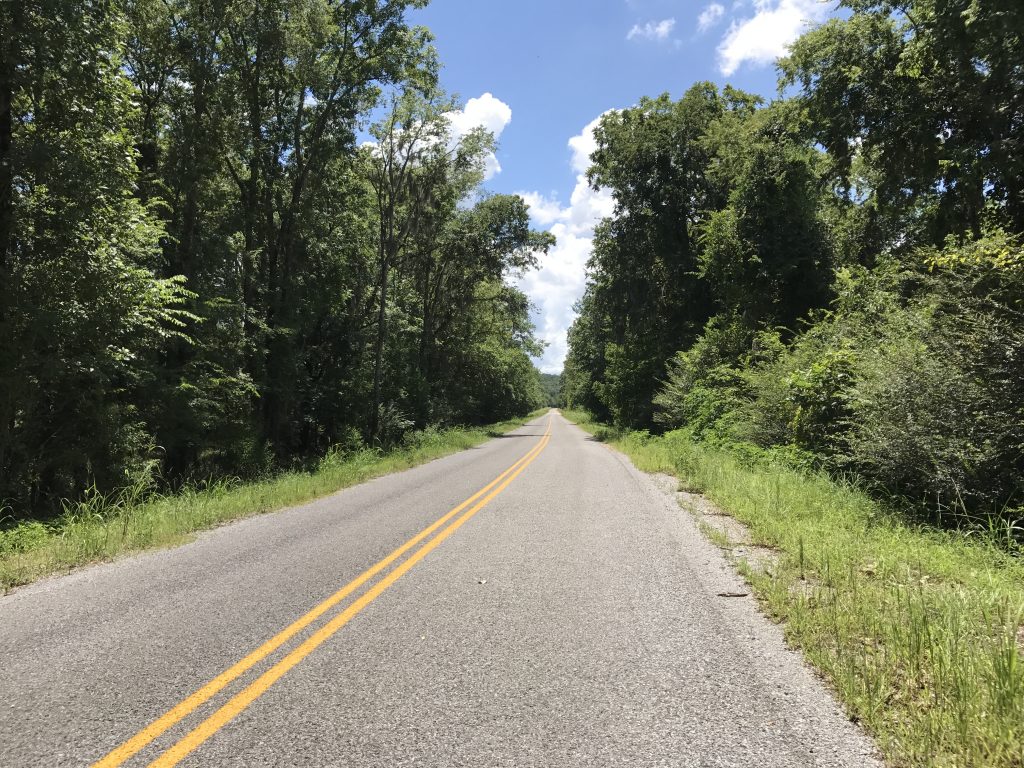
This is the road from Gunter Hill to Lownsburo. It’s typical of country roads in the deep South. It’s not uncommon to be slowed by a tractor driving down the road or animals wandering from one place to another. And there are alligators in the ponds and bogs on either side of this and many back-country roads. When we first arrived in the South, this terrified me. But now that we’ve spent so much time here it just seems like an ordinary situation! Just don’t swim without knowing it’s safe.
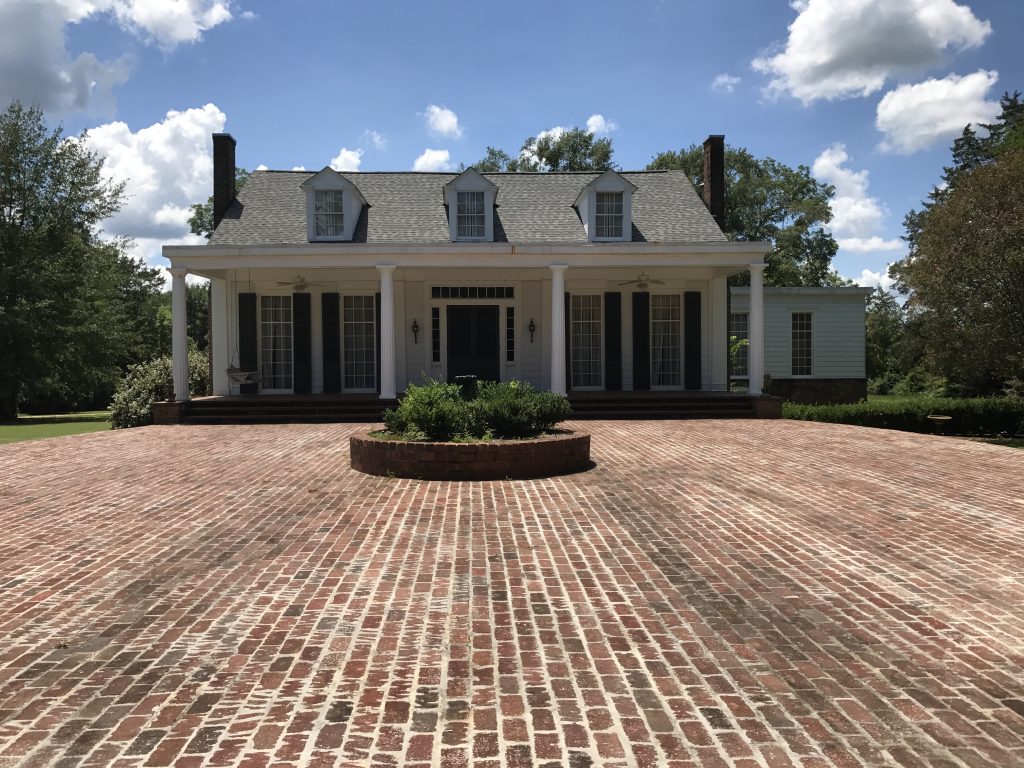
Marengo House. Circa 1847. Now used as a Town Hall.

The grounds surrounding Morengo are meticulously maintained. There’s nowhere here to spend one’s tourist dollars so the townsfolk are motivated by a desire to memorialize the history, I suppose, rather to make a buck. Impressive.
A LITTLE HISTORY. I went down the research rabbit hole and found some interesting information about this little town. Originally known as McGill’s Hill, the community began attracting settlers following the conclusion of the Creek War. In 1832 the residents changed the name to Lowndesboro in honor of U. S. Congressman William Lowndes. With its proximity to the Alabama River, the community had grown into a prosperous town by the 1830s. Many wealthy planters settled in the area, leaving a legacy of historic mid-19th-century architecture that has mostly survived to this day. A brief skirmish was fought at Lowndesboro in April 1865 between a group of Confederate cavalry and advance troops of the Union Army during Wilson’s Raid. Federal troops occupied the town after driving off the Confederate force, with very little destruction noted from the occupation, thus preserving many of the antebellum houses and structures in the Lowndesboro Historic District. Some of the locals told me that one Union invasion during the Civil War was headed off when the townsfolk circulated rumors that there was a yellow fever epidemic in the town, but I couldn’t verify this with research.
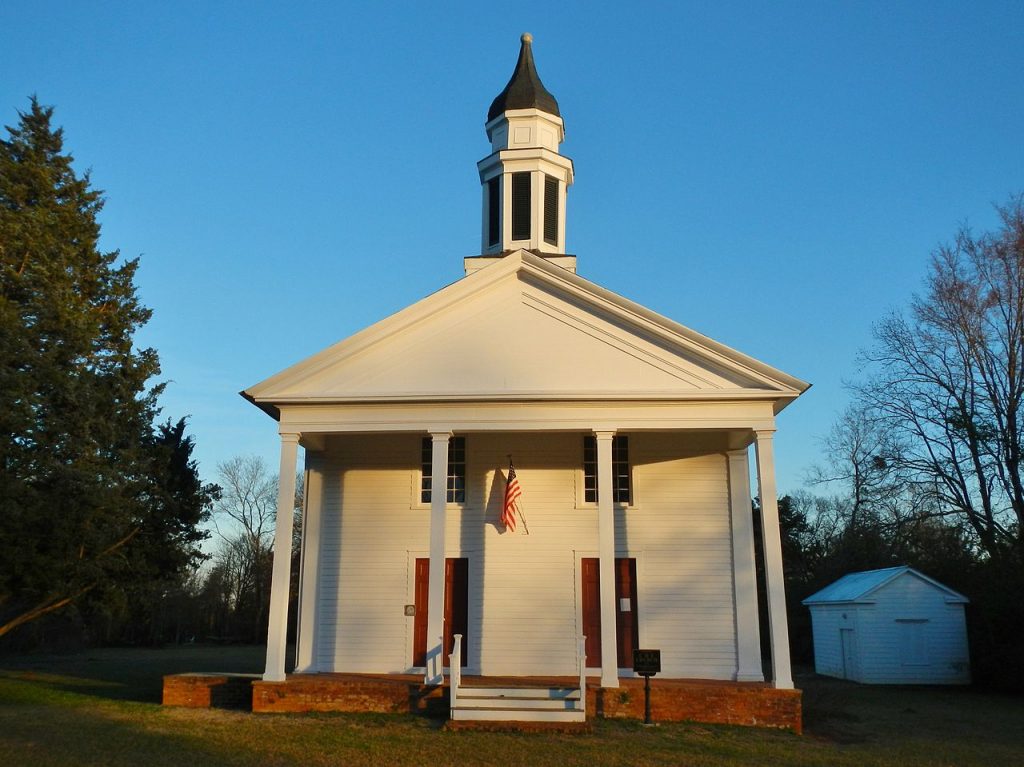
The C.M.E. Church in Lowndesboro was built in 1833. That’s Christian Methodist Episcopal Church…I didn’t know either. The cupola on top is from Alabama’s original state capitol building at Old Cahawba.
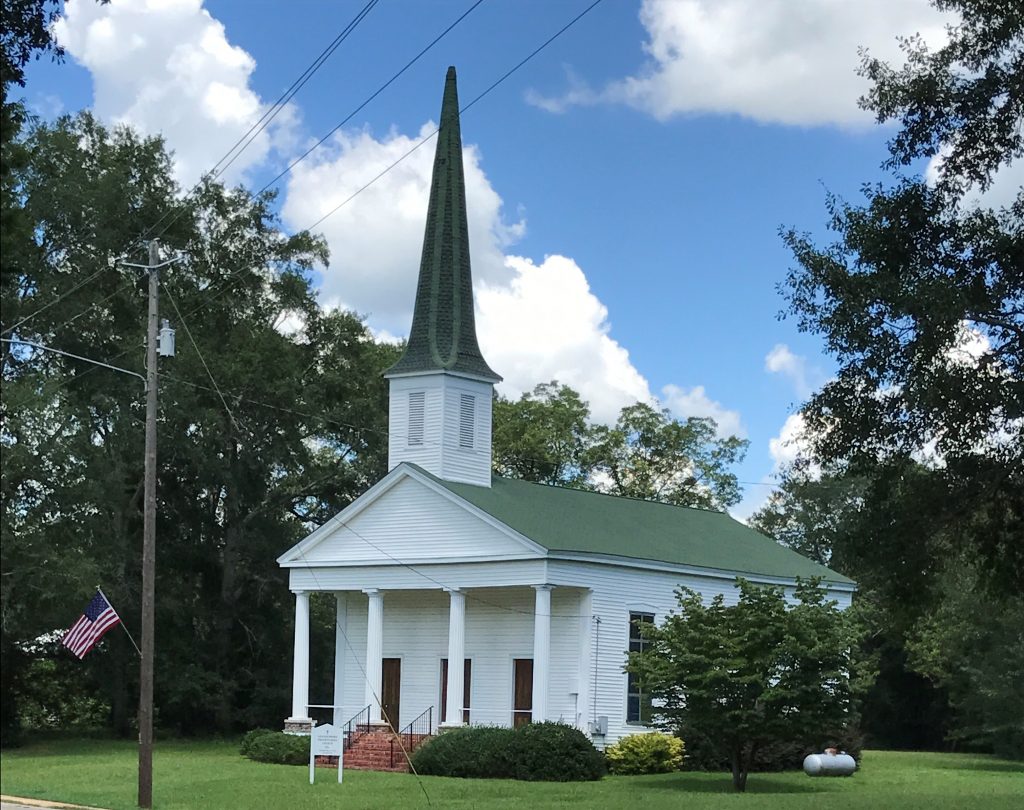
This is the second of six churches we saw in this tiny town. I can’t imagine how the town supports so many churches when there are only about 140 folks who live here.

The Pillars is a Greek Revival antebellum plantation home that was built in 1857 by Archibald Tyson, a cotton planter from North Carolina.
WHAT’S NEXT? This leg of our adventure is sure to be outstanding! We’ll remain at Gunter Hill another week and we’ll take you to Selma and Montgomery, cities that played major roles in the civil rights movement. Then we’ll make our way through Kentucky, Arkansas and Tennessee. Next Missouri will be in our scope, where we’ll begin the famous and historic Oregon Trail route across the country. This is a 2,170-mile historic east–west, large-wheeled wagon route and emigrant trail that connects the Missouri River to valleys in the state of Oregon. The eastern part of the Oregon Trail now spans part of the state of Kansas and nearly all of states of Nebraska and Wyoming. The western half of the trail spans most of the states of Idaho and our destination, our new home in the state of Oregon. Things are getting interesting! So climb aboard, fasten your seat belt and join us during this last year of what will have been our five year journey across America, our Great American Adventure!

I’ll continue my story next time.


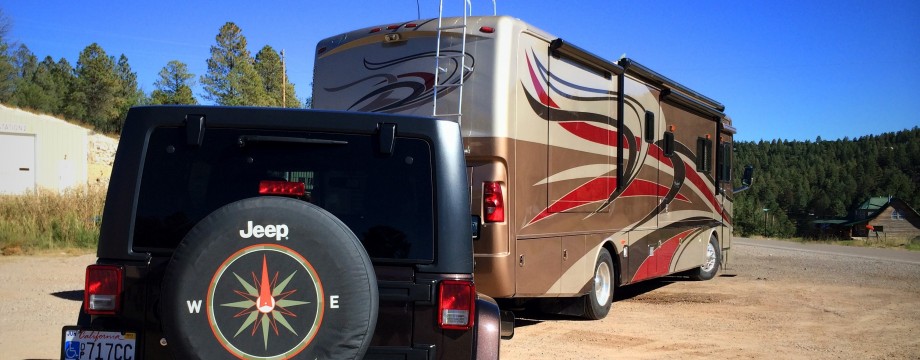
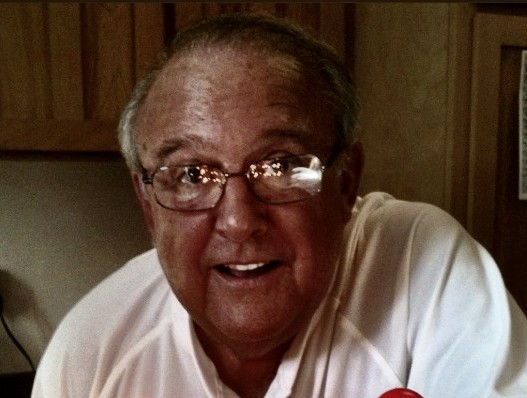







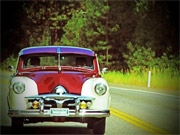


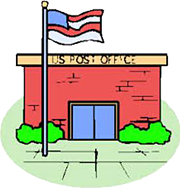





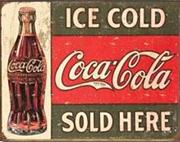


Thank you for being my Great Adventure by RV Charles Kuralt. I remember watching and listening to his story telling and walking a way, especially after hearing the closing horns on Sunday Morning, knowing that I would have a better day. Reading his books always placed his voice in my ear.
The sharing of your trips and stops, along with the manner in which you write and your notations on your blog are read hearing his voice. Thank you.
I think of you and your bride daily as your humidor sits on a shelf at eye level to my desk, upon which is an old tattered sign given to me by my Dad, which was handed down to him by his Dad, reads “No ONE of us is as Smart as ALL of us.” Safe travels my friends!!
Hi Steve: It’s really good to hear from you. I appreciate your kind words. I’ll always know I have you as a friend in Pensacola. Isn’t it funny how life unfolds? What were the odds of us meeting and then hitting it off so well? I enjoyed the time we spent together even though it didn’t turn out to be for Levin Law all that I’d hoped. Please continue to stay in touch. I’ll do the same. Thanks for joining us on this leg of our Adventure. Godspeed!